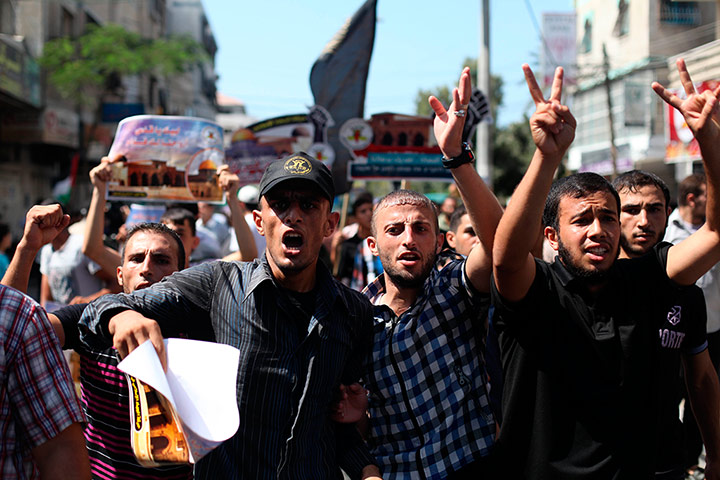(See important update below the post)
“Bewildering”, wrote Matti Friedman in a penetrating essay titled Homage to Orwell, “is certainly one way to describe a Western intellectual scene that has responded to a murderous rampage by religious fanatics against Jews on October 7, 2023, and the subsequent war to defeat the culprits, by making excuses for Islamic terrorists while accusing the Jews of genocide”.
However, other words come to mind when reading a Guardian op-ed by Alan J Kupperman, a professor at the University of Texas at Austin, (“Civilian deaths in Gaza rival those of Darfur – which the US called a ‘genocide'”, April 16), such as dishonest, malign and cruel.
Here are some relevant paragraphs:
In Darfur in 2003, the rebel Sudan Liberation Army launched surprise attacks that killed hundreds of Sudanese soldiers and took others hostage. Sudan responded by targeting non-Arab villages in Darfur accused of supporting and hosting the rebels. From late 2003 to early 2004, government forces and associated militias killed up to 10,000 civilians per month, and displaced about 2 million civilians, leading to more deaths from deprivation. In September 2004, the George W Bush administration declared the violence “genocide”.
…
This pattern is now repeating in the Middle East. On 7 October 2023, Hamas attacked Israel from Gaza, killing more than 1,100 soldiers and civilians, and taking more than 200 hostages, which they justified as a response to decades of expulsion, occupation and oppression. Israel retaliated by attacking Gaza so indiscriminately that nearly 20,000 Palestinians, mainly civilian, were killed during the first two months alone. In January, a US official confirmed that “more than 25,000 civilians have been killed”. Gaza officials now say the toll exceeds 33,000 people. Netanyahu himself has conceded 28,000 deaths.
Israel’s killing rate of civilians in Gaza is roughly equivalent to that in Darfur, and higher than in the other two recent cases, all of which our government labeled “genocide”.
Further, if you zoom out, you’ll see that Kupperman’s narrow focus on what occurred in Darfur from late 2003 to early 2004 is an example of misleadingly tailoring the facts in a way that seems to support his allegation. Between 2003 and 2005, soldiers of the military-led government in Sudan and their proxy militia known as Janjaweed fought rebel groups in Darfur, carrying out a scorched earth policy targeting the Fur, Masalit, and Zaghawa communities in the country due to their ethnicity. An estimated 200,000 civilians were killed. The attacks included the burning of homes, villages, and crops, the systematic destruction of food stores and widespread rape. The violence continued for years, claiming more than 100,000 additional lives.
So, in Darfur, we’re dealing with civilian death in a magnitude that has no relation to what’s occurred in Gaza, and a level of barbarism that is more akin to what Hamas did to Israelis in the south on one day last October than anything the IDF has done in response to that pogrom. In fact, the actual civilian to combatant casualty ratio in the six months of war is reportedly better than what the US achieved in 2016-17 Battle of Mosul – and better than what other Western armies have achieved when engaged in similar urban warfare.
Towards the end of his piece, the Guardian writer floats the following
As in Sudan, Myanmar or China, the answer is not just deterrence but dehumanization. Ask yourself: if a Hamas fighter were hiding under an apartment block of Jewish people in Israel, would the Israel Defense Forces destroy the entire building to kill him? Of course not, but it did so in Gaza because Palestinian lives are devalued.
First, note that the writer doesn’t link to an example of any incident in which the IDF destroyed an entire apartment building to kill one Hamas fighter, because such a thing has never happened. In fact, the army routinely warns civilians of impending attacks, with text messages, leaflets and phone calls, and evacuates urban areas before air and ground attacks commenced. As John Spencer of the Institute of the Modern War Institute observed, the US, in initial invasion of Iraq in 2003 and in the 2004 Battle of Fallujah, didn’t undertake such measures.
Moreover, Kupperman’s broader point – on how the IDF wouldn’t risk the lives of its own citizens, yet launches attacks on enemy targets which cause the deaths of Palestinian civilians – rests on one of the more obtuse arguments we’ve come across: as if there’s any country in the world (democratic or otherwise) that doesn’t prioritise the lives of its own citizens over citizens of countries with whom they’re at war. Non only isn’t that racist, but the moral and legal duty of any sovereign country is, foremost, to protect its own citizens from harm.
Finally, and perhaps most telling of Kupperman’s motivation, let’s look at his brief, one-sentence mention of the Oct. 7 massacre:
This pattern is now repeating in the Middle East. On 7 October 2023, Hamas attacked Israel from Gaza, killing more than 1,100 [sic] soldiers and civilians, and taking more than 200 hostages, which they justified as a response to decades of expulsion, occupation and oppression.
The overwhelming majority of those 1,219 people murdered by the genocidal Hamas terror group were, of course, Jewish civilians, and included the torture (including sexual torture), rape and mutilation of men, women and girls. The final tell is that, in order to downplay their monstrous crime, he cites Hamas’s supposed ‘justification’, as if anything other than the dehumanisation of Jews could possibly explain such sadism and savagery.
Kupperman obviously found it necessary to grossly understate and ‘contextualise’ Hamas’s attack in order to fully complete his desired moral inversion. Similar to Holocaust Inversion, which refers to the act of projecting Nazi evil on to Israel, Israelis, and Jews, Oct. 7th massacre inversion – the kind of which we’ve seen on display at the Guardian in various ways since the first days of the war – downplays the atrocities perpetrated by the malevolent Iranian backed extremist group, and accuses the victims of being guilty of the very crimes committed by the perpetrators.

Related Posts
Following complaint, Indy amends article on alleged Gaza casualties





